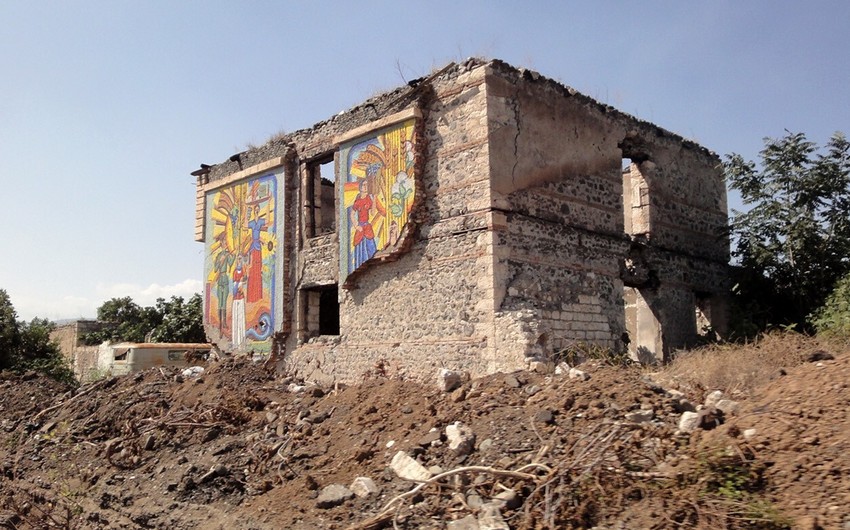An exhibition reflecting Armenian vandalism in Karabakh will be held in New York on May 5, Report informs, citing Notizie geopolitiche.
The exhibition will be coordinated by Angelo Bucarelli, and the photo and video belong to documentary director Fabrizio Conti.
The newspaper notes that thirty years ago, there were 60,000 residents in Aghdam. There was a theater, a cinema and an airport there. Now it is a space of buildings turned into piles of rubble, in which nature has taken over, and signs of life flashed here and there to very few visitors. All this impressed Fabrizio Conti, a creative man, a filmmaker, a documentary maker and a man of connection, who decided to enter this mysterious, dangerous, sometimes unattainable place. His intention was to capture in images the destruction and despair that follow endless militancy, as well as the desolation of the survival of places abandoned by man, because - the catastrophic end of urban settlements created over the centuries to form collectives - passes, after a fierce war, museums under the open sky as an eternal testament to the brutality of conflicts. So, the Conti's project is vast: Aghdam and the territory of Karabakh, where other villages were also abandoned, are only the first of the reports that will unite the ghost towns scattered around the world.
"I first visited Aghdam in February 2021. I wanted to start my project from there. The area is mined, and for this reason, I was accompanied by ANAMA, which clears the area. It is difficult to put into words what I saw when I first entered the once prosperous city; for this reason, maybe I wanted my photos and videos to 'speak' about the systematic destruction - during the Armenian occupation - that gradually destroyed life, making Aghdam the biggest ghost town in the world," says Fabrizio Conti.
Thus, it is an urbicide, and in fact, the exhibition pays homage to the most famous of the systematic destructions in history - Carthage, which dared to challenge Rome.
"When Fabrizio Conti decided to visit Aghdam," coordinator Angelo Bucarelli recalls, "to make his contribution, pay tribute and revive the memory of Karabakh, he walked towards the silence of an abandoned city, defying the danger posed by mines scattered everywhere. Today, that territory does not have secrets for someone who has been interviewing local residents for a year and a half, photographing, filming, and always immersed in his mission. The material collected by Conti reveals not only a narrative ability but also an artistic approach to connecting each image, like a painting that does not require retouching.


 https://static.report.az/photo/61b021b1-0dbe-3900-9faf-d11089c35558.jpg
https://static.report.az/photo/61b021b1-0dbe-3900-9faf-d11089c35558.jpg

